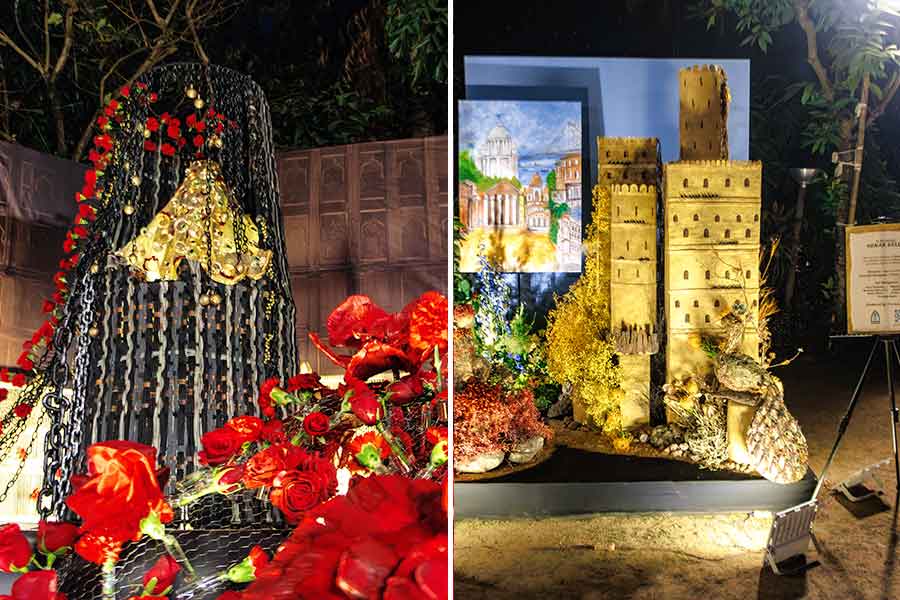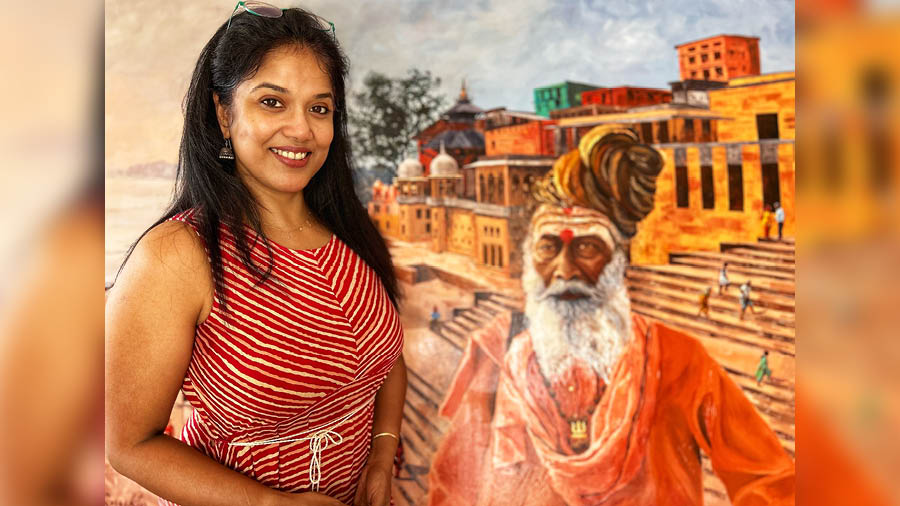The Pushpa Bitan Friendship Society (PBFS) hosted its annual floral art exhibition between January 18 and 19, showcasing spectacular installations that celebrated the theme of cinema. Titled “Blooming Blockbusters”, the exhibition, organised in collaboration with the Alka Jalan Foundation, transformed Kolkata’s Daga Nikunj on Ballygunge Circular Road into a gallery of cinematic stories, told through intricate floral displays. A total of seven installations were featured, inspired by iconic films: Mughal-e-Azam, Sonar Kella, Devdas, Lagaan, Gadar, The Sound of Music, and The Jungle Book.
PBFS, founded in 1976 by four visionary women — Uma Basu, Laxmi Gidwani, Kazuko Nigam, and Uma Vaid — has long been committed to promoting the art of floral design in India. These pioneers, representing distinct schools of flower arrangement, united to highlight floral artistry as a creative discipline. Members of PBFS have since represented India at global platforms like the World Association of Floral Artists (WAFA), held every three years in destinations such as Oman, Barbados and Ireland.
‘We use all kinds of plant materials and products to execute our vision’
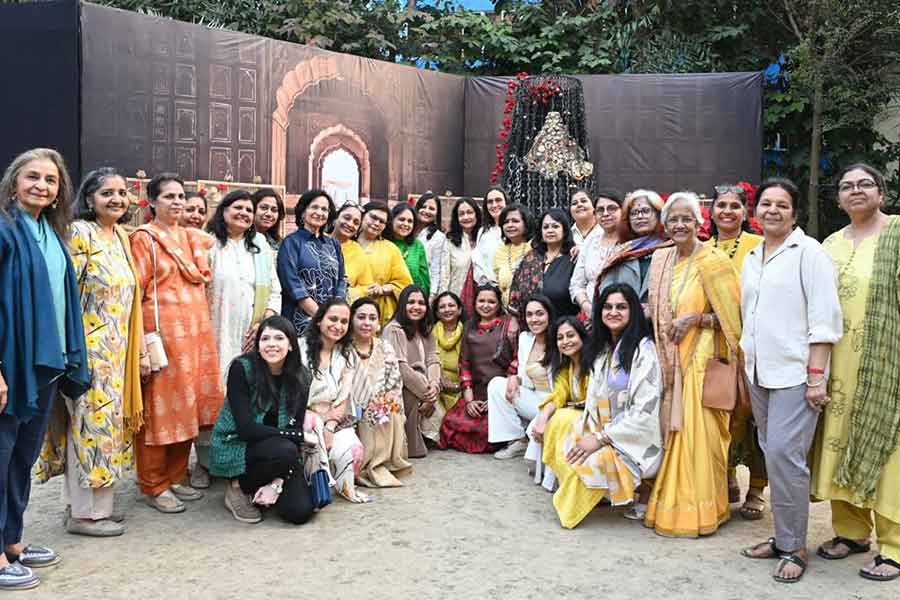
PBFS was founded in 1976 and presently has 143 members Pushpa Bitan Friendship Society
“Everything in life has flowers; we need them for so many things. Flowers are only the final product of the plant. In our installations, we use all kinds of plant materials and products to execute our vision — such as shola, jute, supari leaves, corn husks, fabrics, spices, and so on,” said 75-year-old Kavita Poddar, one of the society’s senior members. Today, PBFS boasts 143 members, with 50 participating in this year’s exhibition.
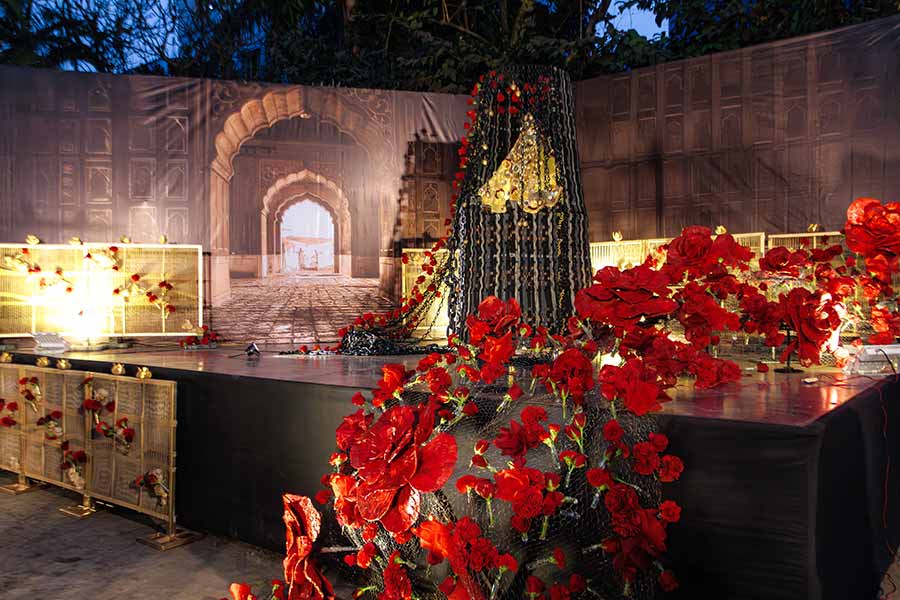
Apart from roses, the ‘Mughal-e-Azam’ exhibit intertwined ropes and chains Krishnungshu Gangopadhyay
The centrepiece of this year’s event was Mughal-e-Azam, the largest installation, situated on the main stage. Roses were the primary element of the display, interwoven with ropes and chains. Renu Poddar, the installation’s director, explained, “Roses symbolise love, hence they were the primary floral element for this. The display also included intertwined ropes and chains around a veiled sculpture with scattered ghungroo, narrating the themes of bondage and helplessness associated with the love story.” Adding historical depth, set designer Monica Khosla Bhargava noted, “The Mughals popularised flowers in the subcontinent. Roses were an integral element of that, as seen during their rule. We tried to keep that in mind as well.”
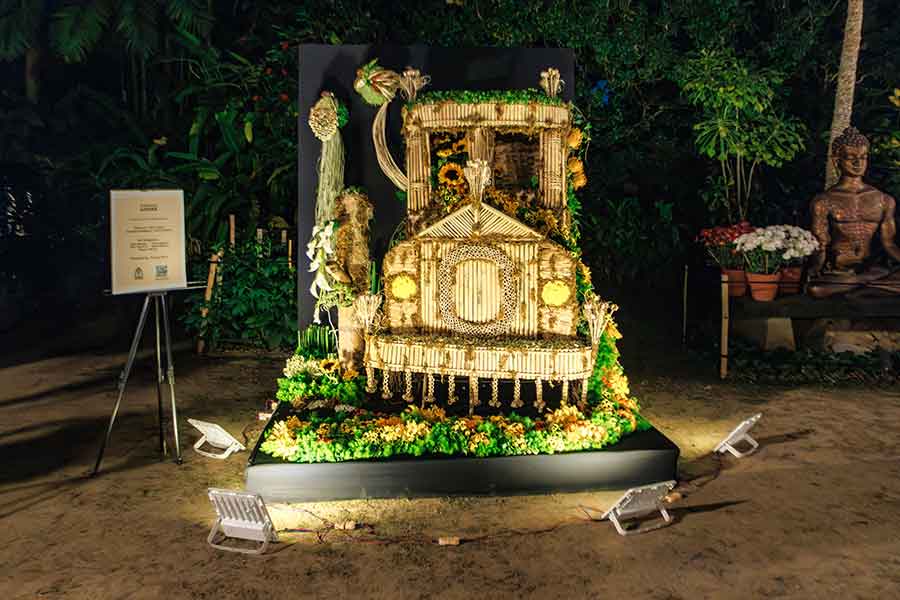
Sunflowers dominated the ‘Gadar’ installation Krishnungshu Gangopadhyay
Gadar, a story of love amidst chaos, was crafted predominantly from bamboo. “I am from Assam originally, and back at home, we make everything with bamboo. So I thought, why not use that here as well,” shared director Alka Gupta. The installation featured a cascading arrangement of yellow flowers, predominantly sunflowers, atop a bamboo truck — a nod to the film’s famous song, Main Nikla Gaddi Leke. A bamboo handpump was also included, referencing an iconic moment from the film.
Sonar Kella captured through sandpaper
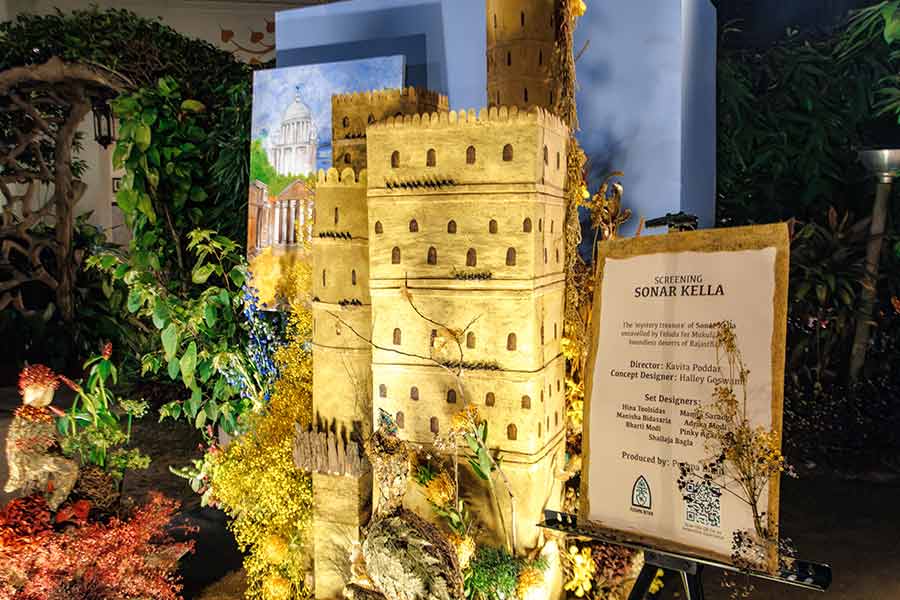
Tiny birds crafted from spices added a unique element to the ‘Sonar Kella’ installation Krishnungshu Gangopadhyay
For the Sonar Kella installation, director Kavita Poddar led her team in crafting the golden fort using handmade sandpaper. “We put sand on marble papers when they were wet and then created the fort with that. We have tried our best to bring out the magic of Satyajit Ray’s screenplay,” she observed. The fort was adorned with tiny birds crafted from spices such as cardamom, kabab chini, and bits of javitri. Kolkata was also represented on a canvas backdrop, completing the homage to one of Ray’s finest works.
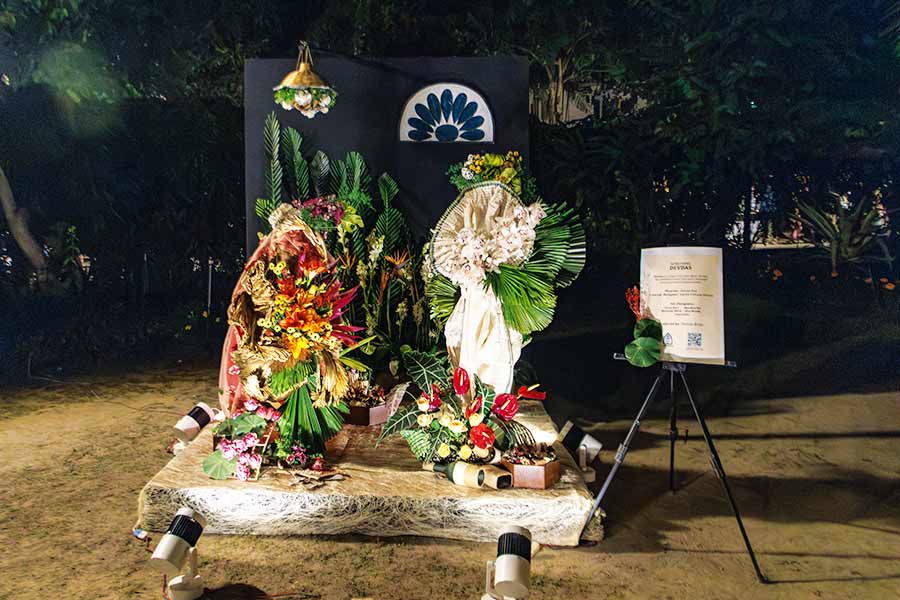
The idea behind the ‘Devdas’ installation was to evoke the grandeur of Bengali zamindar homes Krishnungshu Gangopadhyay
The Devdas installation captured the duality of its protagonists: Devdas’s sorrow and Paro’s joy. Director Ratna Dey highlighted elements like a floral chandelier, coloured frangipani leaves mimicking stained glass windows, and alpona designs painted on jackfruit leaves — all evoking the grandeur of Bengali zamindar homes.
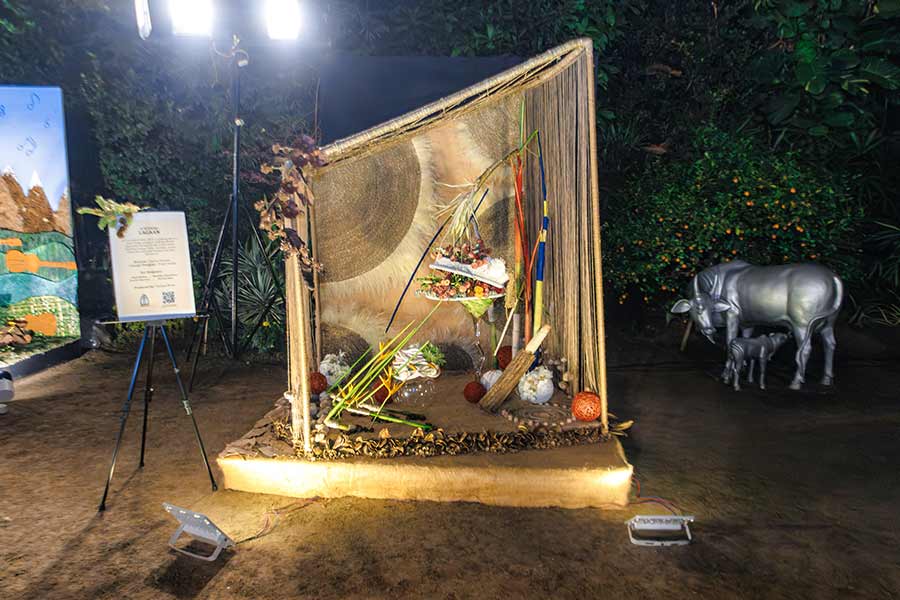
A loofah bat and jute string balls found their way into the installation for ‘Lagaan’ Krishnungshu Gangopadhyay
For Lagaan, jute took centre stage, symbolising the resilience of the Indian people. The display included a turban centrepiece juxtaposed with towering figures representing British colonisers, colour-coordinated with the Union Jack. Concept designer Preeti Sarda elaborated: “A loofah bat and jute string balls resembled the spirit of cricket, while pebbles and stones represented endurance.”
‘Each page unfolds the episodes that happen in the forest’
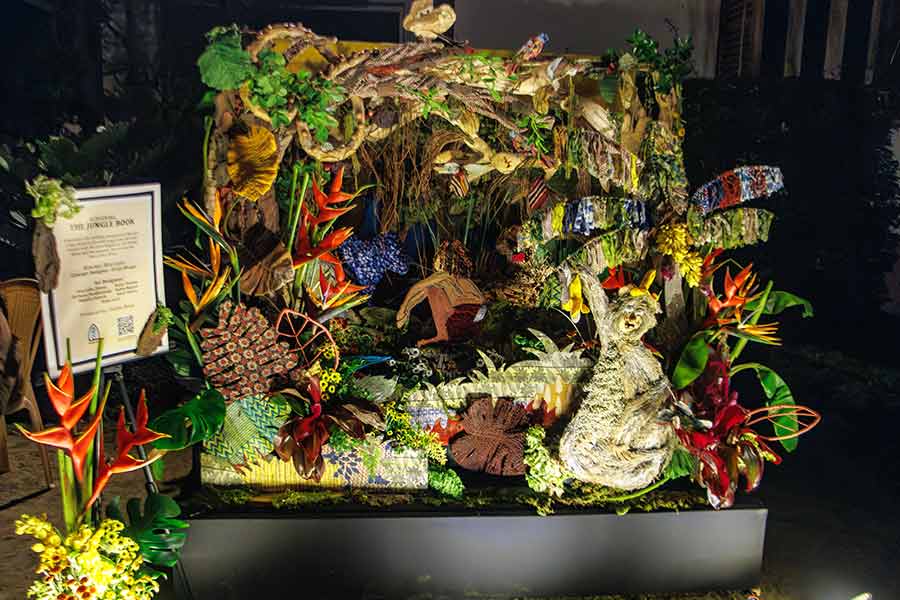
Fabric and macrame leaves depicted Mowgli’s adventures in ‘The Jungle Book’ installation Krishnungshu Gangopadhyay
The whimsical Jungle Book installation unfolded like a pop-up storybook, with fabric and macrame leaves depicting Mowgli’s adventures in the multi-coloured forest. “Each page unfolds the episodes that happen in the forest, visualised through the eyes of the intricately designed protagonist, Mowgli, and his panther best friend Bagheera,” narrated set designer Swati Kheria.
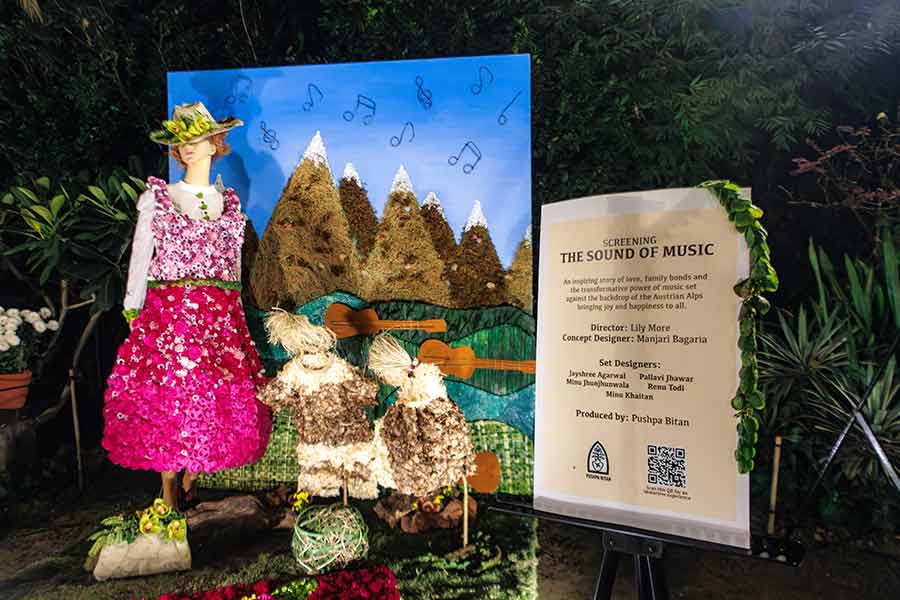
Pink shola flowers were an important part of the installation for ‘The Sound of Music’ Krishnungshu Gangopadhyay
Lastly, The Sound of Music installation recreated the Austrian Alps, complete with a handmade dress for Julie Andrews’s character. “We have picked up the picnic scene from the movie, where they sang, danced, and enjoyed in the sunshine,” said concept designer Manjari Bagaria. Pink shola flowers and fresh blooms brought the joyous scene to life.
Each installation reflected PBFS’s commitment to creativity and detail, celebrating both floral artistry and the timeless magic of cinema. Visitors could scan QR codes accompanying the displays to listen to songs from the films, making the exhibition an immersive experience.
